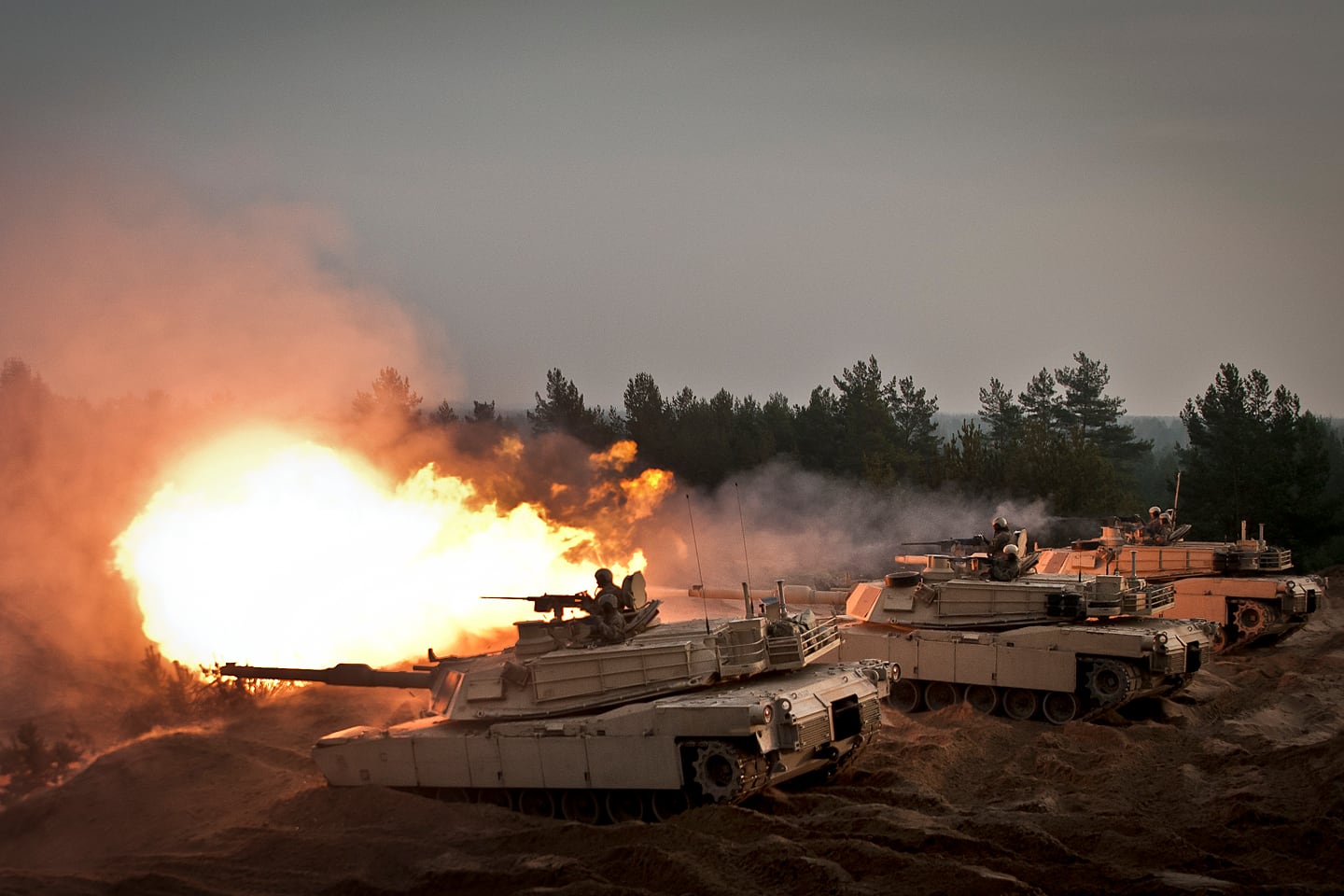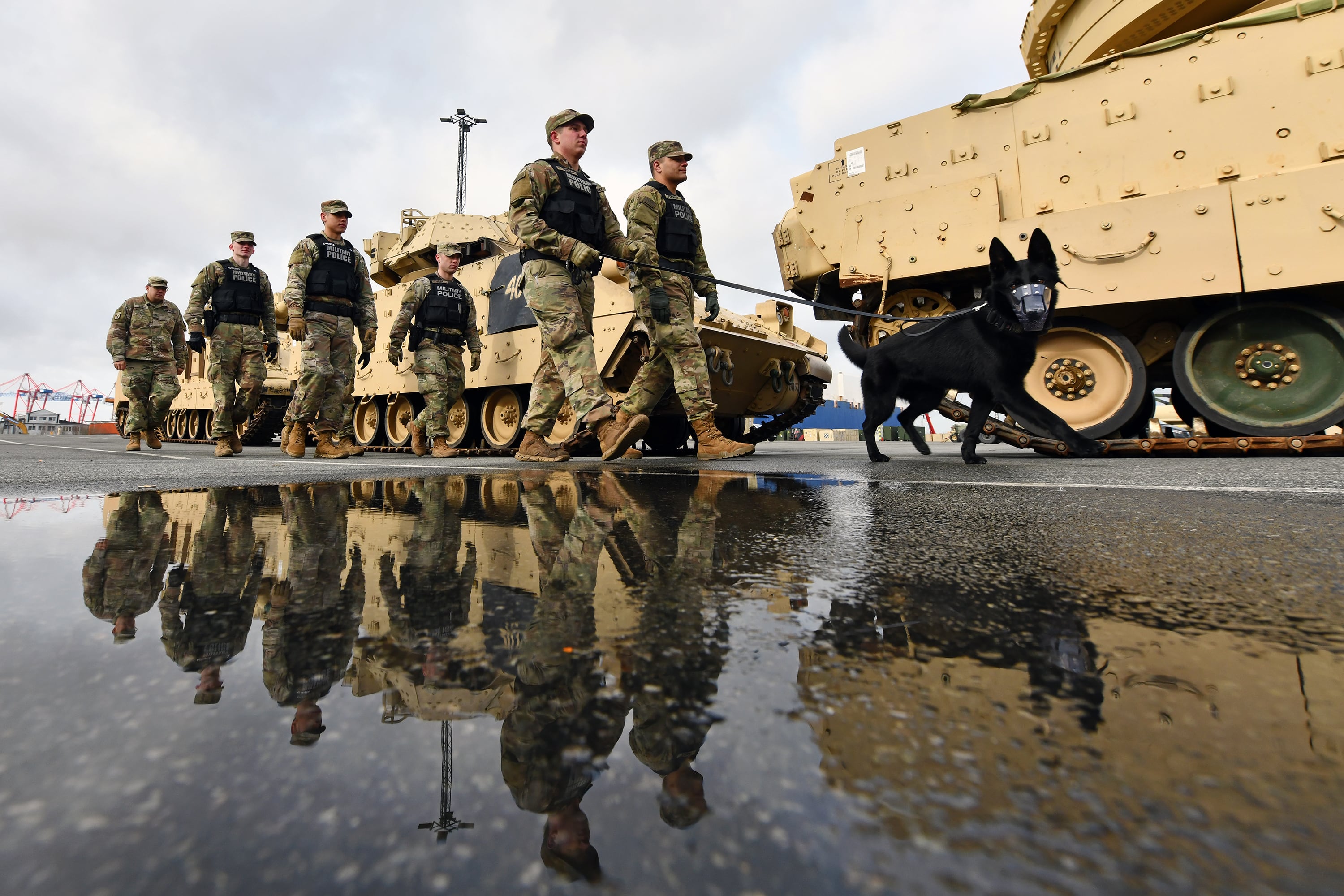Soldiers participating in the Army’s division-scale Defender 2020 exercise across Europe have started to trickle onto the continent, just as generals involved in the effort warn of logistical challenges to operating with the infrastructure there.
Equipment belonging to the 2nd Brigade Combat Team, 3rd Infantry Division rolled off ships into the port of Bremerhaven, Germany, on Feb. 20, as part of the opening salvo of the largest deployment of soldiers from mainland United States to Europe in a quarter century. About 20,000 troops in total will deploy from units in 15 states.
But the massive influx of troops isn’t without complications, the general in charge of U.S. European Command and NATO told the Senate on Tuesday.
“I’m concerned about the bandwidth to be able to accept this large force and I’m also concerned about road and rail from the center portion of Germany to the east — all the way to the eastern border,” said Air Force Gen. Tod Wolters, NATO’s supreme allied commander.
Defender 2020 will bring more than 20,000 pieces of equipment to train on, according to the Army. Some units, like 2nd BCT, 3rd ID, are bringing their own gear, which includes armored vehicles. But 13,000 pieces of equipment will also be drawn from pre-positioned stocks on the continent in Germany, the Netherlands and Belgium.
“The environment in Europe has to be mature enough to be able to absorb 20,000 soldiers and get those soldiers to the right pre-positioned locations to be able to grab the appropriate gear,” Wolters said. “What we want to do is count every second that it takes to get the soldier from the first point of entry all the way to his or her foxhole.”
The European Union, NATO and U.S. European Command have been working to improve transit across the region, Wolters noted. The European Deterrence Initiative, for instance, has funded the placement of pre-positioned stocks throughout the theater, as well as improved infrastructure to the tune of hundreds of millions of dollars in investments since it was initiated in 2014.
RELATED

In the event of a conflict, expanded rail heads to rapidly load and unload armored vehicles, stockpiled fuel and ammunition caches to supply forces, and logistical and intelligence hubs to guide the process would be critical to traversing Europe.
“And, we anticipate that there will be some snags,” Wolters added.
Northern Poland, for instance, is covered with lakes. In fact, Eastern Europe in general is riddled with rivers.
“You’ve got a lot of water that has to be crossed and not many bridges can hold an Abrams tank or a German Leopard tank," retired Lt. Gen. Ben Hodges, who helmed U.S. Army Europe from late 2014 through 2017, told Army Times this fall. "You’re talking 70, 80 tons. Especially when you put it on the back of a heavy equipment transport truck, now we’re up over 100 tons.”
The Army plans to conduct “wet-gap” crossings during Defender 2020 at the Drawsko Pomorskie Training Area in northwestern Poland to train for scenarios like that.
Wolters said during his testimony that northeast and southeast European partners are “getting themselves reacquainted” with the bridging programs required to help move forces around in the event of a conflict.

Two years ago, Wolters noted, Defender 2020 wouldn’t have been possible because the pre-positioned stocks that soldiers needed to draw from were not sufficient.
Army Materiel Command has since developed a plan to build up its stockpiles and said it’s happy with the level of those supplies now, which outfit units with communications, surveillance and weapons systems. Pre-positioned stocks are located in massive humidity-controlled warehouses and hardstand storage spaces in locales like Dülmen, Germany, Eygelshoven, Netherlands and Livorno, Italy.
“Today, we can do that. We know the fitness of the resources and now, we’ll be able to examine their speed with which they can get to the foxhole and be able to execute,” Wolters said.
Wolters and other NATO leaders will be tracking the movement of forces from east to west over Europe, but they won’t be the only ones taking notice.
“We’ve seen a fair amount of response from Russia,” Wolters told Senators, though he did not elaborate on what that response was. “They’re not overly pleased with Defender Europe 20. We’re concerned mostly about the readiness of our forces and we’re doing all that in accordance with international law.”
Kyle Rempfer was an editor and reporter who has covered combat operations, criminal cases, foreign military assistance and training accidents. Before entering journalism, Kyle served in U.S. Air Force Special Tactics and deployed in 2014 to Paktika Province, Afghanistan, and Baghdad, Iraq.





